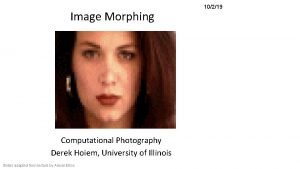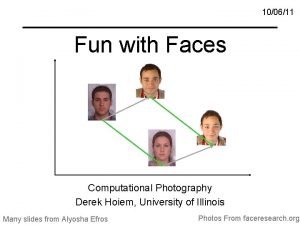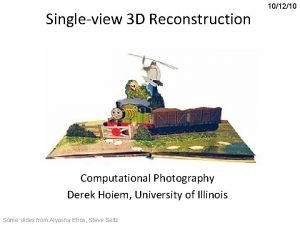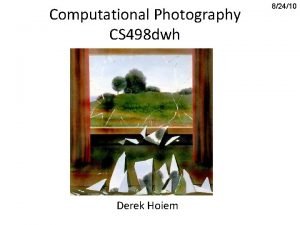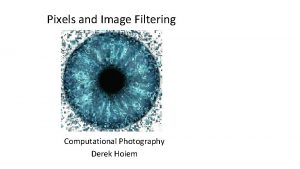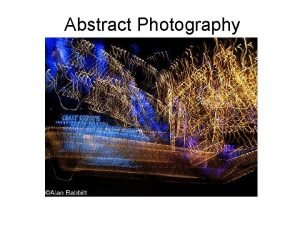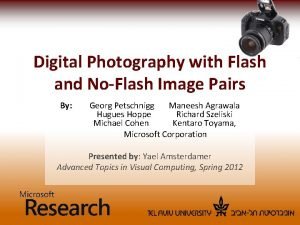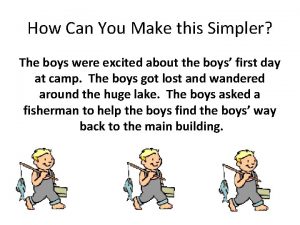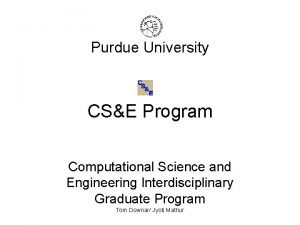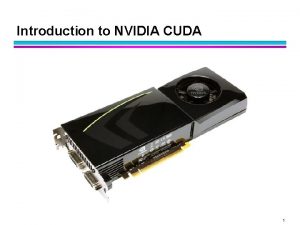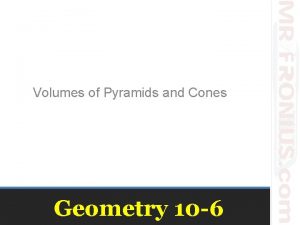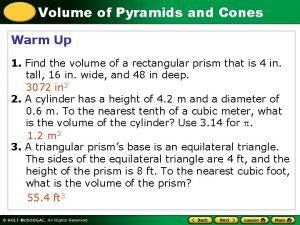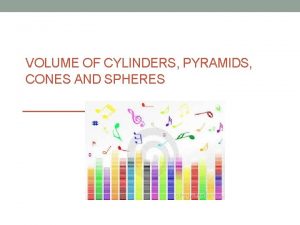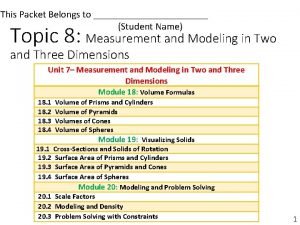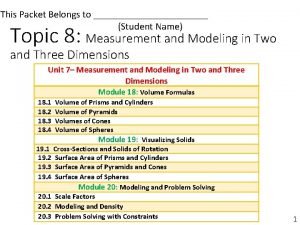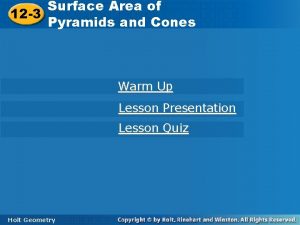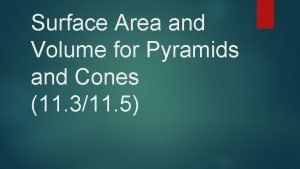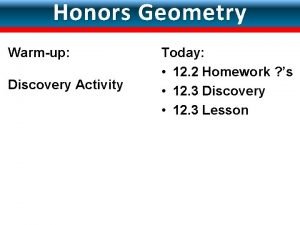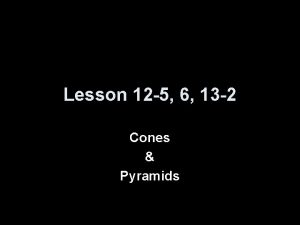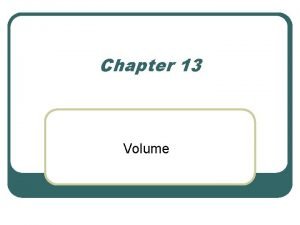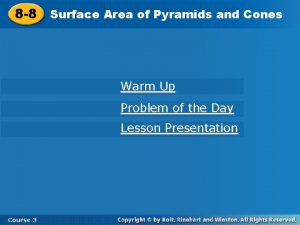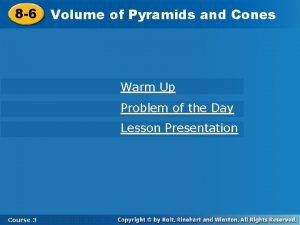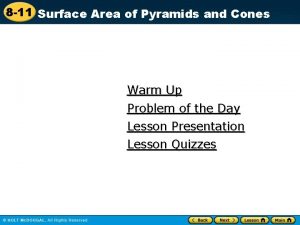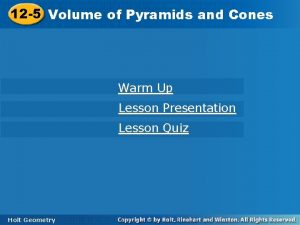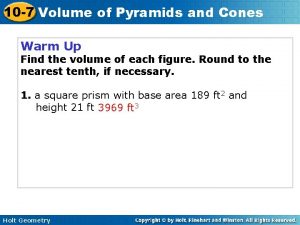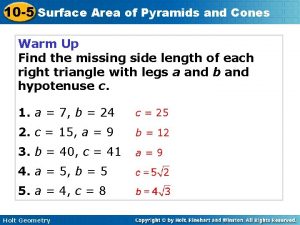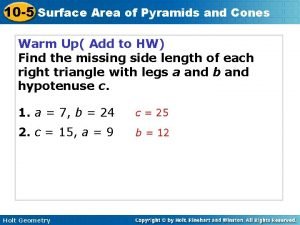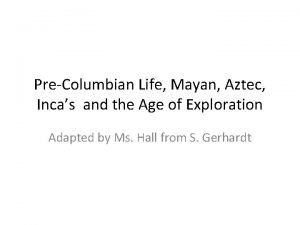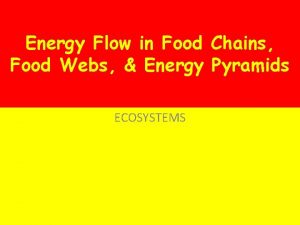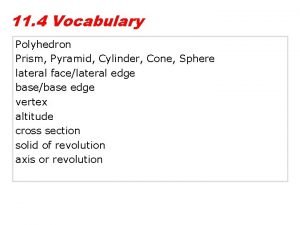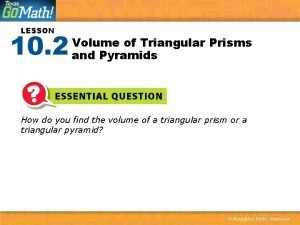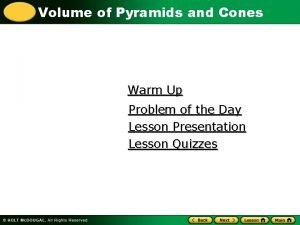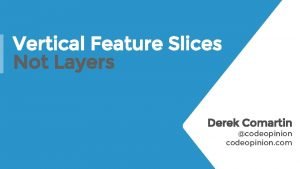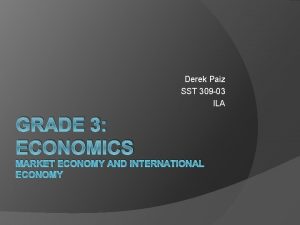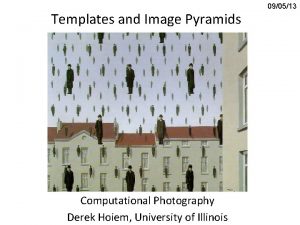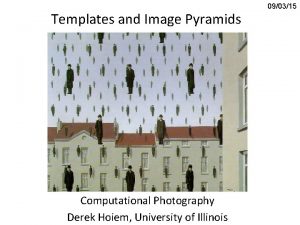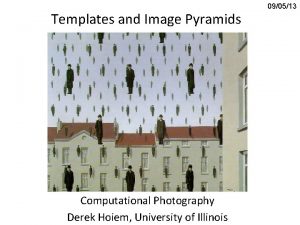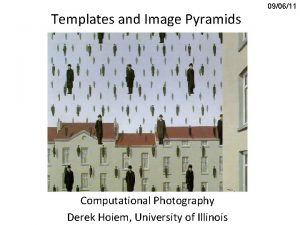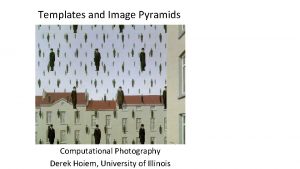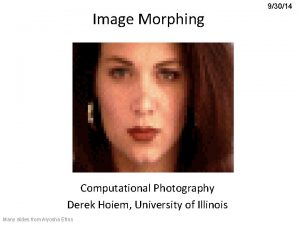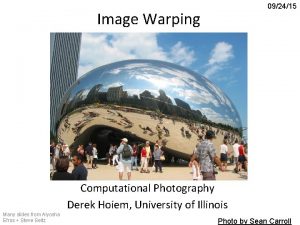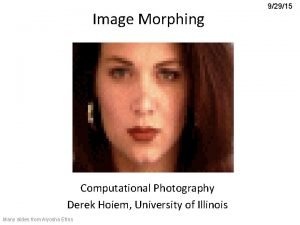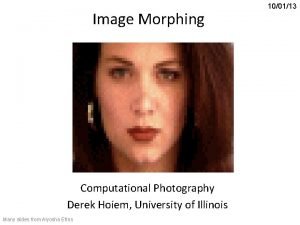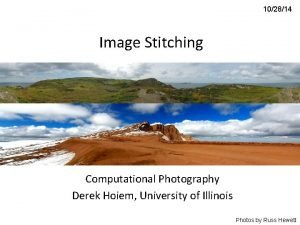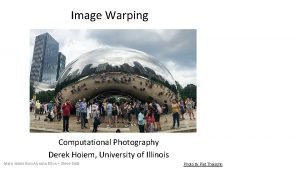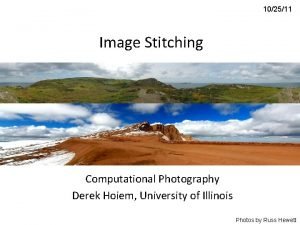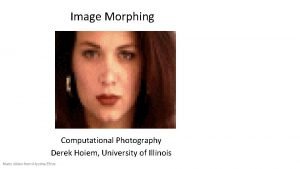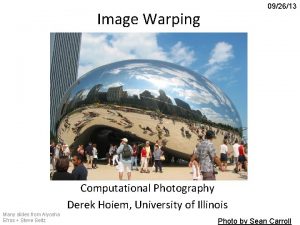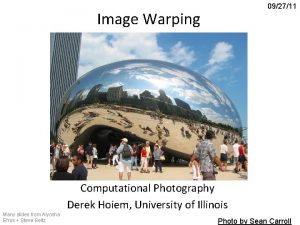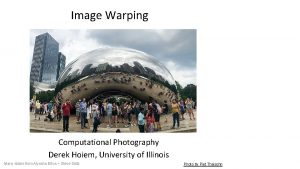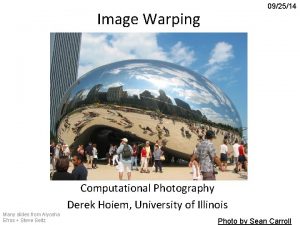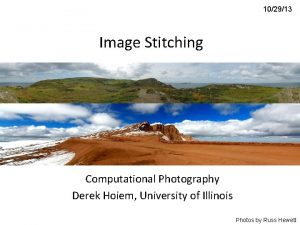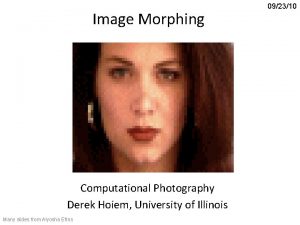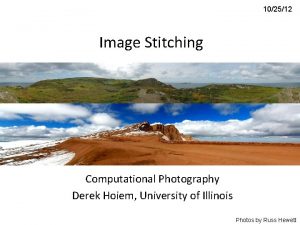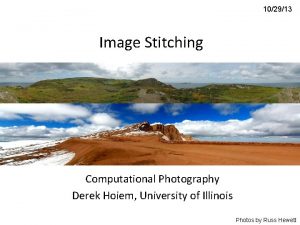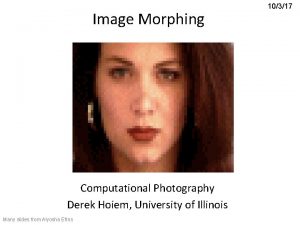Templates and Image Pyramids Computational Photography Derek Hoiem



































![Median filter Salt-and-pepper noise Median filtered • MATLAB: medfilt 2(image, [h w]) Source: M. Median filter Salt-and-pepper noise Median filtered • MATLAB: medfilt 2(image, [h w]) Source: M.](https://slidetodoc.com/presentation_image_h2/44adb71fcc65d66d250c7a11d5b68b55/image-36.jpg)









- Slides: 45

Templates and Image Pyramids Computational Photography Derek Hoiem, University of Illinois 09/02/10

Project 1 • Due Monday at 11: 59 pm • Questions? • Remember to sign up for bulletin board (if not done already)

8/31/10 Review 1. Match the spatial domain image to the Fourier magnitude image 1 2 3 4 5 B A C E D

Today’s class • Template matching • Coarse-to-fine search • Project 2 • Denoising, Compression (as time allows)

Template matching • Goal: find in image • Main challenge: What is a good similarity or distance measure between two patches? – Correlation – Zero-mean correlation – Sum Square Difference – Normalized Cross Correlation

Matching with filters • Goal: find in image • Method 0: filter the image with eye patch f = image g = filter What went wrong? Input Filtered Image

Matching with filters • Goal: find in image • Method 1: filter the image with zero-mean eye mean of f True detections False detections Input Filtered Image (scaled) Thresholded Image

Matching with filters • Goal: find in image • Method 2: SSD True detections Input 1 - sqrt(SSD) Thresholded Image

Matching with filters Can SSD be implemented with linear filters?

Matching with filters • Goal: find in image • Method 2: SSD Input 1 - sqrt(SSD) What’s the potential downside of SSD?

Matching with filters • Goal: find in image • Method 3: Normalized cross-correlation mean template mean image patch Matlab: normxcorr 2(template, im)

Matching with filters • Goal: find in image • Method 3: Normalized cross-correlation True detections Input Normalized X-Correlation Thresholded Image

Matching with filters • Goal: find in image • Method 3: Normalized cross-correlation True detections Input Normalized X-Correlation Thresholded Image

Q: What is the best method to use? A: Depends • Zero-mean filter: fastest but not a great matcher • SSD: next fastest, sensitive to overall intensity • Normalized cross-correlation: slowest, invariant to local average intensity and contrast

Q: What if we want to find larger or smaller eyes? A: Image Pyramid

Review of Sampling Gaussian Filter Image Low-Pass Filtered Image Sample Low-Res Image

Gaussian pyramid Source: Forsyth

Laplacian filter unit impulse Gaussian Laplacian of Gaussian Source: Lazebnik

Laplacian pyramid Source: Forsyth

Computing Gaussian/Laplacian Pyramid Can we reconstruct the original from the laplacian pyramid? http: //sepwww. stanford. edu/~morgan/texturematch/paper_html/node 3. html

Hybrid Image in Laplacian Pyramid Extra points for project 1 High frequency Low frequency

Project 2: Image Alignment • Try SSD alignment • Try normxcorr 2 alignment • Simplementation will work for small images • But larger images will take forever (well, many hours)

Coarse-to-fine Image Registration 1. Compute Gaussian pyramid 2. Align with coarse pyramid 3. Successively align with finer pyramids – Search smaller range Why is this faster? Are we guaranteed to get the same result?

Question Can you align the images using the FFT? Implementation is extra points for project 2

Compression How is it that a 4 MP image can be compressed to a few hundred KB without a noticeable change?

Lossy Image Compression (JPEG) Block-based Discrete Cosine Transform (DCT) Slides: Efros

Using DCT in JPEG • The first coefficient B(0, 0) is the DC component, the average intensity • The top-left coeffs represent low frequencies, the bottom right – high frequencies

Image compression using DCT • Quantize – More coarsely for high frequencies (which also tend to have smaller values) – Many quantized high frequency values will be zero • Encode – Can decode with inverse dct Filter responses Quantization table Quantized values

JPEG Compression Summary 1. Convert image to YCr. Cb 2. Subsample color by factor of 2 – People have bad resolution for color 3. Split into blocks (8 x 8, typically), subtract 128 4. For each block a. Compute DCT coefficients for b. Coarsely quantize • Many high frequency components will become zero c. Encode (e. g. , with Huffman coding) http: //en. wikipedia. org/wiki/YCb. Cr http: //en. wikipedia. org/wiki/JPEG

Lossless compression (PNG) 1. Predict that a pixel’s value based on its upper-left neighborhood 2. Store difference of predicted and actual value 3. Pkzip it (DEFLATE algorithm)

Denoising Gaussian Filter Additive Gaussian Noise

Reducing Gaussian noise Smoothing with larger standard deviations suppresses noise, but also blurs the image Source: S. Lazebnik

Reducing salt-and-pepper noise by Gaussian smoothing 3 x 3 5 x 5 7 x 7

Alternative idea: Median filtering • A median filter operates over a window by selecting the median intensity in the window • Is median filtering linear? Source: K. Grauman

Median filter • What advantage does median filtering have over Gaussian filtering? – Robustness to outliers Source: K. Grauman
![Median filter Saltandpepper noise Median filtered MATLAB medfilt 2image h w Source M Median filter Salt-and-pepper noise Median filtered • MATLAB: medfilt 2(image, [h w]) Source: M.](https://slidetodoc.com/presentation_image_h2/44adb71fcc65d66d250c7a11d5b68b55/image-36.jpg)
Median filter Salt-and-pepper noise Median filtered • MATLAB: medfilt 2(image, [h w]) Source: M. Hebert

Median vs. Gaussian filtering 3 x 3 Gaussian Median 5 x 5 7 x 7

Other filter choices • Weighted median (pixels further from center count less) • Clipped mean (average, ignoring few brightest and darkest pixels) • Bilateral filtering (weight by spatial distance and intensity difference) Bilateral filtering Image: http: //vision. ai. uiuc. edu/? p=1455

Review of Last 3 Days • Filtering in spatial domain – Slide filter over image and take dot product at each position – Remember linearity (for linear filters) – Examples • 1 D: [-1 0 1], [0 0 0. 5 1 1 1 0. 5 0 0 0] • 1 D: [0. 25], [0 0 0. 5 1 1 1 0. 5 0 0 0] • 2 D: [1 0 0 ; 0 2 0 ; 0 0 1]/4

Review of Last 3 Days • Linear filters for basic processing – Edge filter (high-pass) – Gaussian filter (low-pass) [-1 1] Gaussian FFT of Gradient Filter FFT of Gaussian

Review of Last 3 Days • Derivative of Gaussian

Review of Last 3 Days • Filtering in frequency domain – Can be faster than filtering in spatial domain (for large filters) – Can help understand effect of filter – Algorithm: 1. Convert image and filter to fft (fft 2 in matlab) 2. Pointwise-multiply ffts 3. Convert result to spatial domain with ifft 2

Review of Last 3 Days • Applications of filters – Template matching (SSD or Normxcorr 2) • SSD can be done with linear filters, is sensitive to overall intensity – Gaussian pyramid • Coarse-to-fine search, multi-scale detection – Laplacian pyramid • Can be used for blending (later) • More compact image representation

Review of Last 3 Days • Applications of filters – Downsampling • Need to sufficiently low-pass before downsampling – Compression • In JPEG, coarsely quantize high frequencies

Next two classes: I’m gone David Forsyth is lecturing • Tuesday – Physical models of light – Color and color spaces – The eye and physiological phenomena • Thursday – Contrast enhancement, histogram equalization, color balancing – Tone mapping Don’t forget Project 1 due Monday Extra Office Hours Today 2 -3 pm
 Derek hoiem
Derek hoiem Derek hoiem
Derek hoiem Derek hoiem
Derek hoiem Computational photography uiuc
Computational photography uiuc Computational photography uiuc
Computational photography uiuc Is abstract photography same as conceptual photography
Is abstract photography same as conceptual photography Digital photography with flash and no-flash image pairs
Digital photography with flash and no-flash image pairs Everyone should bring ___ mother to the picnic
Everyone should bring ___ mother to the picnic Computational thinking algorithms and programming
Computational thinking algorithms and programming Using mathematics and computational thinking
Using mathematics and computational thinking Ece 570 purdue
Ece 570 purdue Computational engineering and physical modeling
Computational engineering and physical modeling Practice 10 6 volumes of pyramids and cones answers
Practice 10 6 volumes of pyramids and cones answers Volume of pyramids and cones worksheet
Volume of pyramids and cones worksheet Finding the volume of cylinders pyramids cones and spheres
Finding the volume of cylinders pyramids cones and spheres 12-3 surface areas of pyramids and cones answer key
12-3 surface areas of pyramids and cones answer key Lesson 19-3 surface area of pyramids and cones
Lesson 19-3 surface area of pyramids and cones How to find surface area of composite figures
How to find surface area of composite figures Finding the surface area of a cone
Finding the surface area of a cone Perimeter of a cone
Perimeter of a cone 11-3 surface areas of pyramids and cones answer key
11-3 surface areas of pyramids and cones answer key Lesson 3 surface areas of pyramids and cones
Lesson 3 surface areas of pyramids and cones Lesson 12-5 volumes of pyramids and cones
Lesson 12-5 volumes of pyramids and cones Food webs and energy pyramids answer key
Food webs and energy pyramids answer key Volume of an oblique cylinder
Volume of an oblique cylinder Surface area of pyramids and cones
Surface area of pyramids and cones Volume pyramids and cones worksheet
Volume pyramids and cones worksheet Surface area of pyramids and cones
Surface area of pyramids and cones 12-5 volumes of pyramids and cones
12-5 volumes of pyramids and cones 11-3 volume of pyramids and cones
11-3 volume of pyramids and cones 10-7 volume of pyramids and cones
10-7 volume of pyramids and cones 10-7 volume of pyramids and cones answer key
10-7 volume of pyramids and cones answer key Surface area of pyramids and cones
Surface area of pyramids and cones 10-5 surface area of pyramids and cones
10-5 surface area of pyramids and cones The mayan pyramids and temples were made from _____.
The mayan pyramids and temples were made from _____. Food chain amazon rainforest
Food chain amazon rainforest Food chains, food webs and ecological pyramids
Food chains, food webs and ecological pyramids Food chain and food web examples
Food chain and food web examples Is cone a polyhedron
Is cone a polyhedron Volume of triangular prisms and pyramids
Volume of triangular prisms and pyramids Volume of pyramids and cones calculator
Volume of pyramids and cones calculator Analog image and digital image
Analog image and digital image Codeopinion
Codeopinion Kennedy krieger high school
Kennedy krieger high school Derek england
Derek england Derek paiz
Derek paiz
